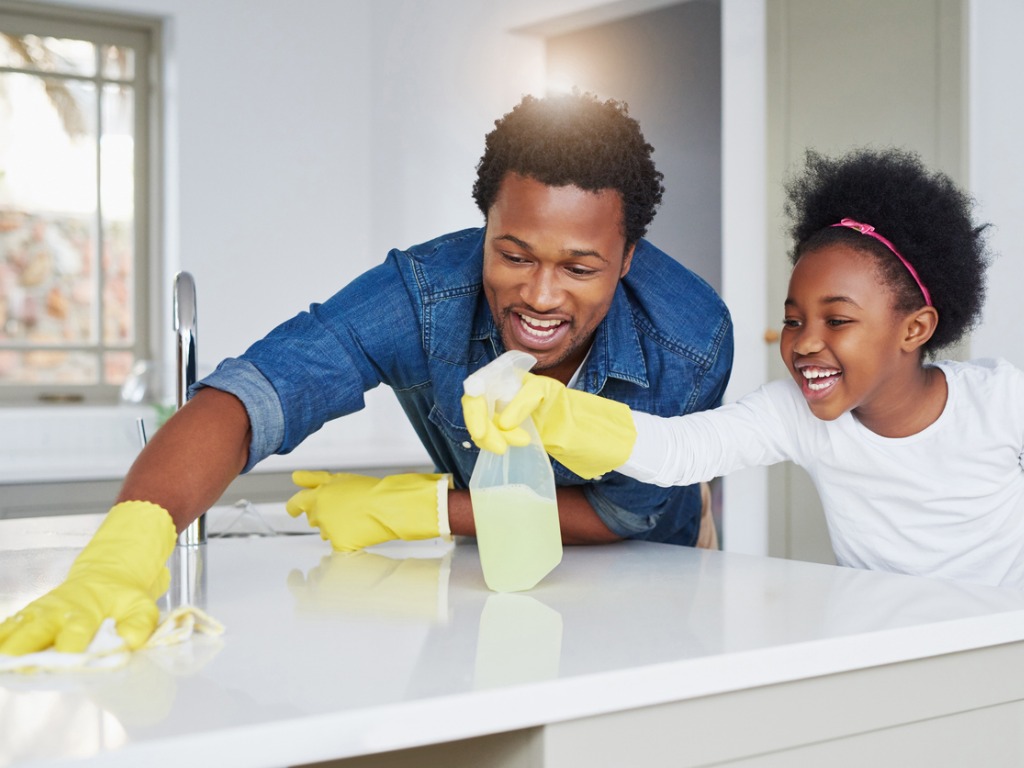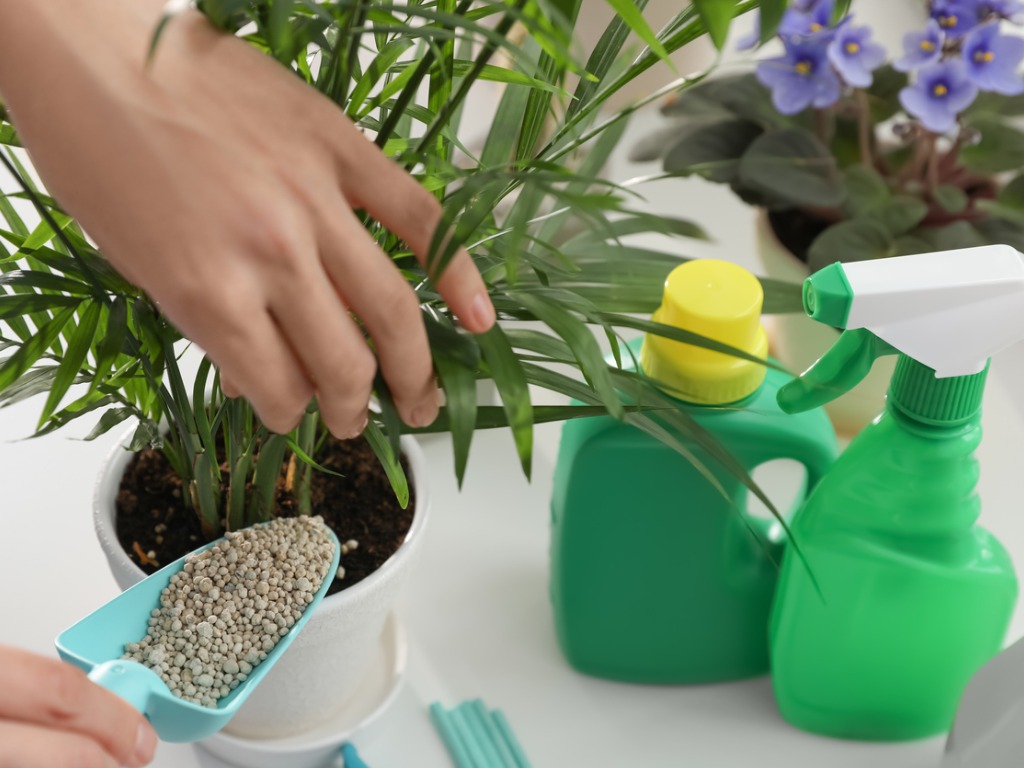Ammonia: History, Usage, and Safety

The Bottom Line
Ammonia is a chemical that can be naturally or artificially produced. The toxicity of ammonia depends on its concentration. Most household products containing ammonia are safe when used as directed, but some have the potential to cause burns. Industrial products are typically more concentrated and more likely to cause burns.

The Full Story
Successful farming cultures dating back to ancient times learned that intensive farming reduced the soil's nutrients and led to lower crop yields. They discovered that amending the soil with natural fertilizers like animal feces and discarded food helped recharge the soil. Crop rotation, with legumes like peas or soybeans, also helped to heal the land. The key soil component being provided by these methods was nitrogen.
By 1900, agricultural scientists figured out that nitrogen was the key player and ammonia could be used to supply the nitrogen that the soil needed. The world population was growing, and food crops needed to keep up. A large, natural ammonia source was found on a group of islands off of the coast of Peru. These islands were home to millions of sea birds. Apparently, this island was more of the desert variety and did not get much rain—sea bird feces (poop) built up undisturbed over many hundreds of years. The bird poop on these islands became a worldwide provider of ammonia (mostly used for fertilizer, but also for gunpowder). From 1840 to 1870, an estimated 12 million tons were removed. It didn’t take long to see that at the rate they were going, the island would run out of ammonia in about 50 years.
Leading scientists agreed that someone had to find a way to make ammonia or the world would die from famine. The science pair Fritz Haber and Carl Bosch came up with a way to extract nitrogen from the air and produce ammonia profitably and in large quantities. Most of the air that we breathe is nitrogen. Haber said their process turned “air to bread.” Unfortunately, this process also turned air to ammunition when ammonia was used to supply gunpowder manufacturers. While the basis of the Haber-Bosch process is still used today and is credited with saving lives by reducing famine, it is at the same time responsible for many deaths.
Ammonia is essential for modern life on earth. It is composed of one nitrogen and three hydrogens atoms (NH3). While ammonia production has become more advanced, most of the ammonia (70–85%) is still used to make fertilizer for food crops. The rest is used for cleaning products, refrigeration fluid, explosives, plastics, and other items such as smelling salts.
Common household items that contain ammonia are potting soil with fertilizer, fertilizers alone, and cleaners. In potting soil, the little white pieces of fertilizer contain ammonia. Children who take a handful and put it into their mouths are usually fine. Rinsing out the mouth and washing the hands is all you usually need to do to minimize any harm.
The most common household cleaning products with ammonia are usually glass cleaners. The ammonia evaporates quickly before streaks can be left behind. Children sometimes spray glass cleaners into their mouths or eyes. This can be very irritating. Rinsing the mouth with water or a gentle eye wash can remove the product and stop the irritation. Because ammonia is water soluble, in almost all exposures rinsing with water is recommended.
Fertilizer that contains ammonia is more likely to cause irritation to the skin and stomach than other household products because it is more concentrated. Even a taste of fertilizer alone can cause stomach upset or vomiting.
One unusual use of ammonia is smelling salts used by weight lifters. The potent smell is supposed to give the user a surge of adrenaline, helping them to lift heavy weights. The noxious smell of ammonia causes the user to breathe in deeply. In theory, this could help performance by briefly delivering more oxygen to the muscles. However, there is no proof that smelling salts actually cause an adrenaline release. There have been cases of children biting into smelling salt capsules and getting burns to the lips, mouth, and tongue.
In the industrial setting, ammonia compounds are usually alkaline corrosive products that can cause chemical burns. In some industrial processes like energy production with anhydrous ammonia, pipes carry concentrated ammonia under pressure. If a pipe bursts, there could be injury from the ammonia and the pressure as well. Industrial cleaners with ammonia used in places like hospitals can also be highly concentrated. Exposures can happen when trying to properly dilute the product and it splashes back onto the user. In all of these situations, washing with comfortable temperature water is still the initial treatment to remove the ammonia. If a person is injured, call emergency medical services immediately. They can stabilize the patient and also help wash off the ammonia on the way to a healthcare facility.
Remember that chemicals should never be mixed. Some chemicals are more harmful than others. Ammonia is one chemical that can make a worse product when mixed with something else. For example, mixing ammonia and bleach produces chloramine gas, which can cause a lot of coughing and sore throat. Depending on how much chloramine gas is generated and the person’s lung reactivity, it can also cause shortness of breath and wheezing. Anytime someone has trouble breathing or is wheezing, call 911.
All ammonia compounds have the potential to cause problems, which range from irritation to a burn depending on the strength of the product, the amount, and the duration of exposure. If someone been exposed to an ammonia-based product, get an immediate personalized recommendation online or call Poison Control at 1-800-222-1222. Both options are free, confidential, and available 24 hours a day.
Pela Soto, PharmD, BSHS Pharmacogenomics, BS Microbiology
Certified Specialist in Poison Information
Poisoned?
Call 1-800-222-1222 or
Prevention Tips
- Read all product labels before using an ammonia-containing product.
- Do not mix cleaning products. Doing so may create harmful gases.
- The danger associated with an ammonia product depends on how concentrated it is. Use appropriate personal protective equipment when recommended (for example: gloves, goggles).
- When using ammonia-based cleaning products, be sure to have fresh air circulating in the area.
This Really Happened
A 30-year-old woman unintentionally splashed a concentrated ammonia cleaner into her eye. The product was meant to be diluted with water before use. She rinsed her eye at the time of exposure and decided to watch it at home. The next day her eye was still painful, and she woke up with a crusting on the eye. She decided to go to an ER where the medical team rinsed out her eye some more and called Poison Control. In addition to confirming that adequate irrigation had been performed, Poison Control recommended a vision exam and a fluorescein stain to check for any scratches on the surface of her eye along with numbing medication to make her more comfortable.
The eye stain showed one large abrasion. She was sent home with an antibiotic ointment for her eye, instructions to take over-the-counter pain medication, and a referral to follow-up with an ophthalmologist to make sure that she had no changes in vision. Her eye healed up nicely within a few weeks, and she did not suffer any permanent loss of vision.
For More Information
Ammonia. ChemicalSafetyFacts.org [cited 2022 Mar 03].
Crawford J. Turning air into bread. Beaverton (OR): The roots of progress [cited 2022 Mar 03].
References
McCrory P. Smelling salts. Br J Sports Med. 2006;40(8):659–60.
Twigg M. Catalyst handbook. Boca Raton: CRC Press; 1996. Chapter 8, Ammonia synthesis; p. 384–403.
Poisoned?
Call 1-800-222-1222 or
Prevention Tips
- Read all product labels before using an ammonia-containing product.
- Do not mix cleaning products. Doing so may create harmful gases.
- The danger associated with an ammonia product depends on how concentrated it is. Use appropriate personal protective equipment when recommended (for example: gloves, goggles).
- When using ammonia-based cleaning products, be sure to have fresh air circulating in the area.
This Really Happened
A 30-year-old woman unintentionally splashed a concentrated ammonia cleaner into her eye. The product was meant to be diluted with water before use. She rinsed her eye at the time of exposure and decided to watch it at home. The next day her eye was still painful, and she woke up with a crusting on the eye. She decided to go to an ER where the medical team rinsed out her eye some more and called Poison Control. In addition to confirming that adequate irrigation had been performed, Poison Control recommended a vision exam and a fluorescein stain to check for any scratches on the surface of her eye along with numbing medication to make her more comfortable.
The eye stain showed one large abrasion. She was sent home with an antibiotic ointment for her eye, instructions to take over-the-counter pain medication, and a referral to follow-up with an ophthalmologist to make sure that she had no changes in vision. Her eye healed up nicely within a few weeks, and she did not suffer any permanent loss of vision.
